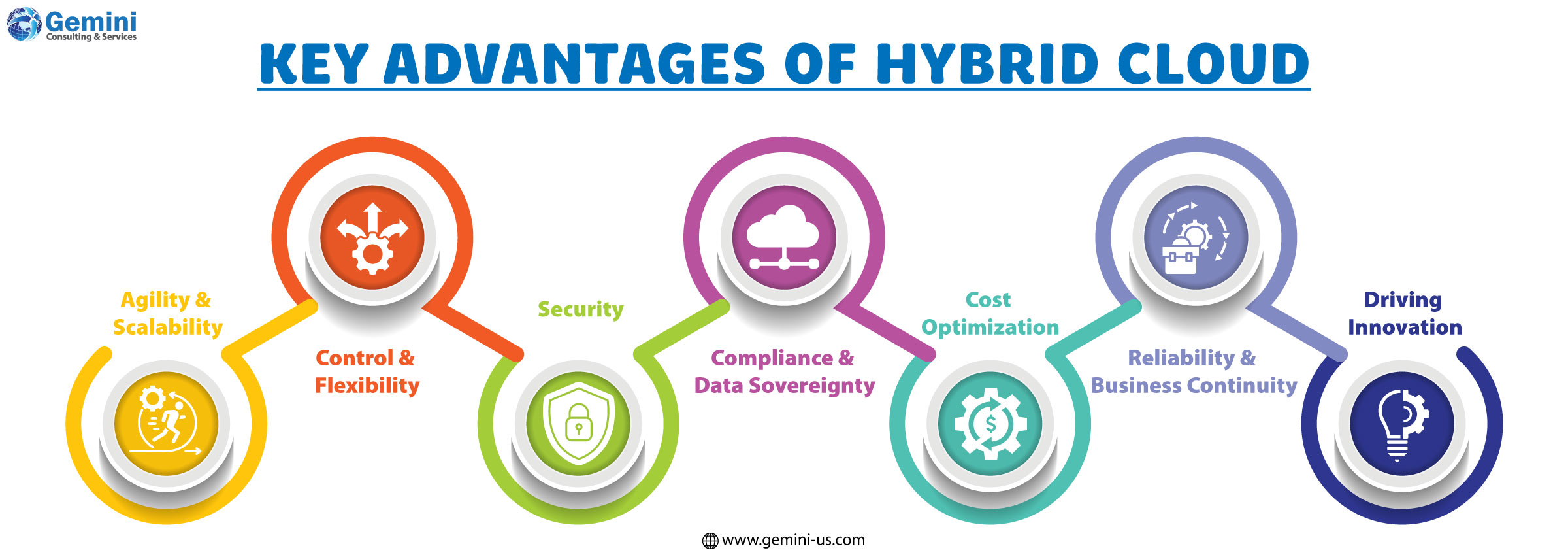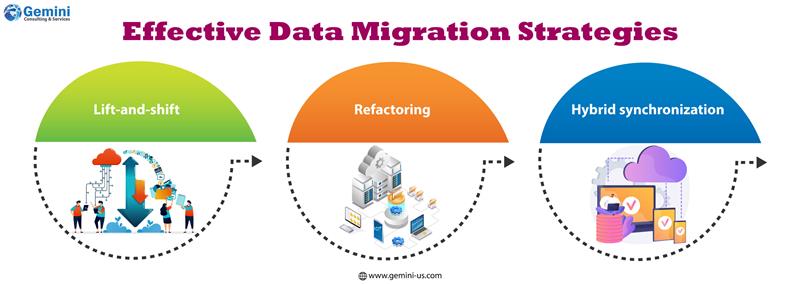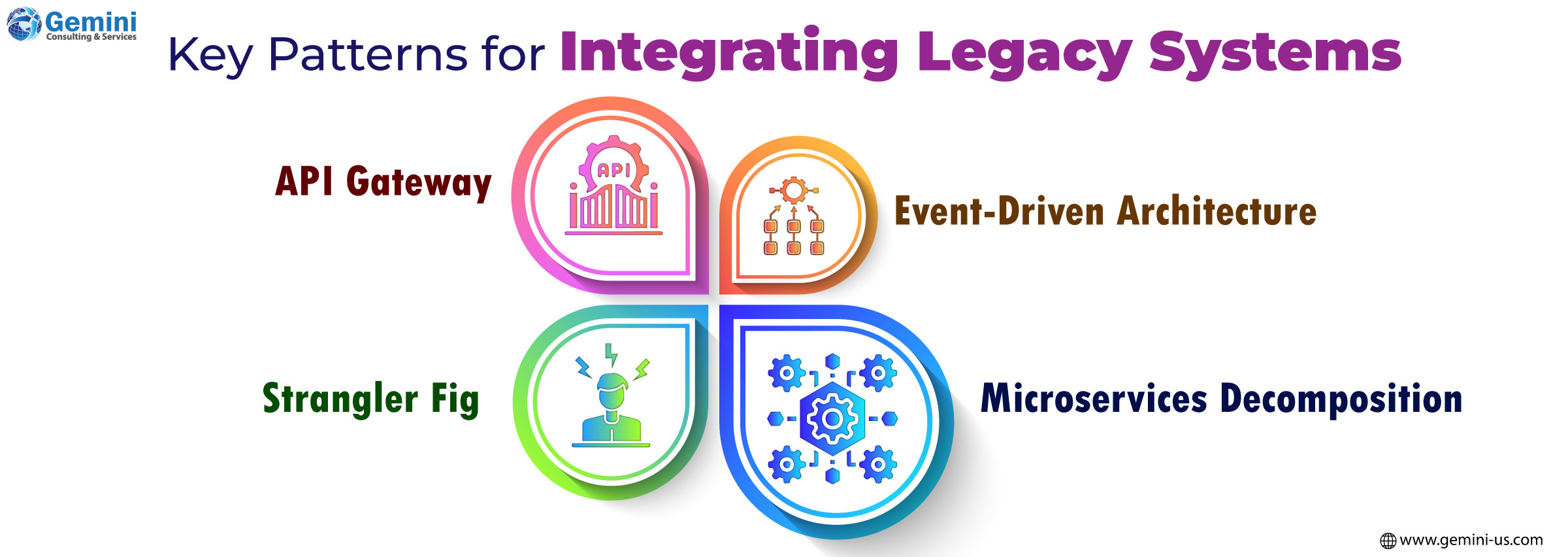In today’s fast-evolving digital world, enterprises are rethinking how they manage IT infrastructure. With the rapid rise of cloud computing, Artificial Intelligence (AI), and data-driven business models, one thing has become clear: the hybrid cloud is the bridge between traditional systems and the future of enterprise technology.
Why Hybrid Cloud Matters
A hybrid cloud combines on-premises data centers, private clouds, and public cloud environments into a unified, flexible ecosystem. This approach lets organizations balance control with innovation, keeping sensitive data secure while using the scalability and agility of cloud platforms like AWS, Microsoft Azure, and Google Cloud.
Before the cloud era, organizations ran everything on-premise, managing hardware, software, and networking infrastructure themselves. While this gave control, it was costly and limited scalability. The emergence of enterprise cloud computing changed that, offering virtualized, on-demand resources through models such as Infrastructure-as-a-Service (IaaS), Platform-as-a-Service (PaaS), and Software-as-a-Service (SaaS).
Still, many companies needed to retain certain workloads in-house for regulatory, performance, or security reasons. The hybrid model evolved as the ideal middle ground, combining the flexibility of the public cloud with the control of private environments.
The Rise of Hybrid Multicloud
Today’s enterprises prefer hybrid multicloud setups that integrate multiple public and private clouds. This model supports containerized applications and cloud-native development, using orchestration platforms like Kubernetes to deploy and manage workloads seamlessly across environments.
When properly designed, hybrid multicloud offers low latency, high performance, and zero downtime, while ensuring data sovereignty and compliance with global regulations.

1. Agility and Scalability
Hybrid cloud gives organizations the power to scale quickly. IT teams can provision computing resources in minutes instead of months, enabling faster development cycles and immediate responses to demand spikes like an e-commerce surge or peak travel season.
2. Control and Flexibility
Businesses can decide where data and applications live. Sensitive information (PII, financial data, IP) can remain on private servers, while less critical workloads move to the public cloud for efficiency. This flexibility supports both compliance and performance needs.
3. Security
Hybrid systems enable centralized security management with encryption, automated policies, and access controls. Data travels securely between clouds via containers or encrypted APIs, maintaining integrity and confidentiality across platforms.
4. Compliance and Data Sovereignty
Heavily regulated sectors like finance, healthcare, or energy must store data in specific regions. Hybrid architecture helps companies meet those requirements while still benefiting from the public cloud’s scale and innovation.
5. Cost Optimization
Instead of buying and maintaining expensive hardware, companies use the pay-as-you-go model for cloud resources. This reduces capital expenditure and minimizes waste. By balancing workloads between private and public clouds, enterprises can optimize costs and avoid vendor lock-in.
6. Reliability and Business Continuity
Hybrid cloud improves disaster recovery by syncing backups between local and cloud storage. If one system fails, data can be restored from another, ensuring uptime and resilience.
7. Driving Innovation
Hybrid infrastructure supports modernization, especially when transforming legacy systems. It allows businesses to integrate AI, machine learning, and automation without disrupting existing operations. According to IBM research, the value of hybrid cloud investments multiplies when combined with digital transformation initiatives.
Modernizing Legacy Systems Through Hybrid Cloud
Legacy systems like decades-old ERP or CRM platforms are often monolithic, slow to scale, and resistant to integration with modern tools. These limitations, known as technical debt, hinder innovation.
Hybrid cloud enables incremental modernization instead of risky “big bang” migrations. Organizations can gradually move non-critical workloads to the cloud, test compatibility, and refine strategies before shifting mission-critical applications.
This step-by-step modernization reduces risk, improves flexibility, and helps teams gain cloud expertise while maintaining essential on-premise operations.
Designing Secure and Reliable Connectivity
Successful hybrid integration depends on robust network connectivity between on-premise and cloud environments. This involves the following.
- VPNs and dedicated circuits like AWS Direct Connect for secure, low-latency links.
- Load balancers such as Azure Front Door or AWS Global Accelerator for optimized traffic routing.
- Edge computing to bring processing closer to users, reducing response times by up to 50%.
- Containerization with tools like Docker and Kubernetes to enable portability across diverse environments.
Latency, bandwidth, and failover design are essential considerations to ensure seamless data flow and application performance.
Comparing Hybrid Platforms
Each major cloud provider offers its own hybrid framework.
- AWS Outposts brings AWS hardware and services into on-premise environments for consistent APIs and local data residency.
- Azure Arc extends Azure’s management layer across any infrastructure, ideal for organizations seeking centralized governance across diverse systems.
- Google Anthos focuses on containerized, Kubernetes-based workloads, promoting application modernization and cross-cloud flexibility.
Choose
- AWS Outposts for AWS-centric workloads needing on-premise data control.
- Azure Arc for hybrid governance across mixed environments.
- Google Anthos for microservices and containerized application strategies.

Migrating legacy databases requires careful planning. Common strategies include the following.
- Lift-and-shift: Move applications as-is for quick wins.
- Refactoring: Re-architect for cloud-native performance.
- Hybrid synchronization: Maintain both on-prem and cloud systems during transition.
Advanced techniques like Change Data Capture (CDC) and blue-green deployments enable near-zero downtime and rollback capabilities. Tools like Oracle Data Guard or SQL Server Always On ensure data consistency throughout the process.
The right choice depends on data volume, downtime tolerance, and compliance requirements.
Estimating the Total Cost of Migration
A true Total Cost of Ownership (TCO) analysis must include the following.
- Migration expenses: Tools, assessment, professional services.
- Operational costs: Compute, storage, networking, and management.
- Hidden costs: Training, compliance, and data egress fees (often 20–40% of total costs).
Use tools like AWS TCO Calculator, Google Cloud Pricing Calculator, and Azure Cost Management for accurate estimates. Balance direct savings with strategic gains such as faster deployment, agility, and innovation as all these contribute to ROI.

Common architectural patterns that support gradual modernization include the following.
- API Gateway: Expose legacy functionalities through REST or GraphQL interfaces.
- Strangler Fig: Gradually replace legacy modules with microservices without downtime.
- Event-Driven Architecture: Enable decoupled communication between systems.
- Microservices Decomposition: Split monoliths into smaller, independently deployable units.
These approaches ensure legacy systems evolve gracefully while integrating seamlessly with modern cloud services.
Lift-and-Shift vs Refactoring: Choosing the Right Path
- Lift-and-shift is fast and low-risk but doesn’t unlock full cloud potential.
- Refactoring delivers long-term scalability and performance but requires more investment and time.
Most enterprises use a hybrid of both — migrating stable systems quickly and refactoring those that can gain the most from modernization.
Securing Data During Migration
Security is non-negotiable. A robust hybrid strategy includes:
- Encryption at rest and in transit.
- Zero Trust architecture, verifying every interaction.
- Identity and Access Management (IAM) for controlled access.
- Regular audits, vulnerability assessments, and compliance checks.
Security must be continuous from initial migration to ongoing operations to safeguard sensitive data across clouds.
With over a decade of experience, Gemini Consulting & Services is well placed to help customers deploy hybrid cloud applications. Contact us to learn how hybrid cloud can help your enterprise in gaining agility and flexibility.
Conclusion: The Future is Hybrid
The hybrid cloud is not just a temporary bridge. It is the foundation for the next generation of enterprise IT. By combining the best of legacy control and modern flexibility, organizations can innovate faster, optimize costs, and deliver superior digital experiences.
Enterprises that master hybrid strategies today will lead the digital economy tomorrow, where resilience, agility, and intelligent automation define success.



